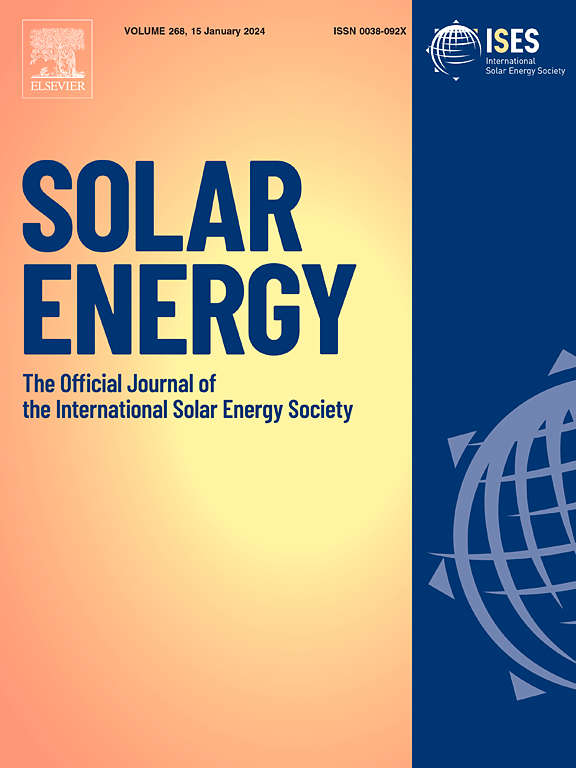不同遮阳条件下太阳能电池性能的实验与数值研究
IF 6
2区 工程技术
Q2 ENERGY & FUELS
引用次数: 0
摘要
在光伏组件的实际应用中,遮阳是一个不可避免的问题。本研究采用实验测量与数值模拟相结合的方法,系统地研究了遮阳对太阳能电池性能的影响。分析了不同遮光比下的关键性能参数,包括开路电压(Voc)、短路电流(Isc)、最大输出功率(Pmax)和串联电阻(Rs)。实验结果表明,遮荫能显著降低Isc和Pmax,两者均随遮荫比的增加呈线性下降趋势。同时,Voc仅略有下降,而Rs呈指数增长,说明在遮光条件下串联电阻对功率损耗起着至关重要的作用。在此基础上,提出了一种等效转换方法,将规则的遮光模式沿坐标轴转换为等效的条形遮光,实现了各种遮光条件下的快速性能预测。实验验证证实了预测和测量的I-V和P-V特性的高度一致性,关键性能参数的相对偏差保持在3%以下。此外,该模型对不规则遮阳(如叶片遮阳)的预测精度较高。这些发现为评估遮阳对太阳能电池效率的影响提供了技术支持,并为评估均匀和非均匀遮阳条件下太阳能电池的性能提供了有效的建模工具。本文章由计算机程序翻译,如有差异,请以英文原文为准。
Experimental and numerical study of solar cell performance under different shading conditions
In practical applications of photovoltaic (PV) modules, the shading is an unavoidable issue. This study systematically investigates the impact of the shading on the performance of solar cells by combining experimental measurements with numerical simulations. Key performance parameters, including open circuit voltage (Voc), short circuit current (Isc), maximum output power (Pmax), and series resistance (Rs), are analyzed under different shading ratios. The experimental results demonstrate that the shading significantly reduces Isc and Pmax, both of which exhibit a linear decreasing trend as the shading ratio increases. Meanwhile, Voc shows only a slight decline, whereas Rs increases exponentially, indicating that series resistance plays a crucial role in power loss under the shading conditions. Furthermore, an equivalent transformation method is proposed, which converts regular shading patterns into equivalent strip-shaped shading along the coordinate axis, enabling rapid performance prediction under various shading conditions. Experimental validation confirms a high degree of agreement of the predicted and measured I-V and P-V characteristics, with relative deviations in key performance parameters remaining below 3%. Moreover, the proposed model exhibits high accuracy in predicting the impact of the irregular shading, such as the shading caused by leaves. These findings provide technical support for assessing the effect of shading on solar cell efficiency and offer as an effective modeling tool for evaluating the performance of solar cells under both uniform and non-uniform shading conditions.
求助全文
通过发布文献求助,成功后即可免费获取论文全文。
去求助
来源期刊

Solar Energy
工程技术-能源与燃料
CiteScore
13.90
自引率
9.00%
发文量
0
审稿时长
47 days
期刊介绍:
Solar Energy welcomes manuscripts presenting information not previously published in journals on any aspect of solar energy research, development, application, measurement or policy. The term "solar energy" in this context includes the indirect uses such as wind energy and biomass
 求助内容:
求助内容: 应助结果提醒方式:
应助结果提醒方式:


